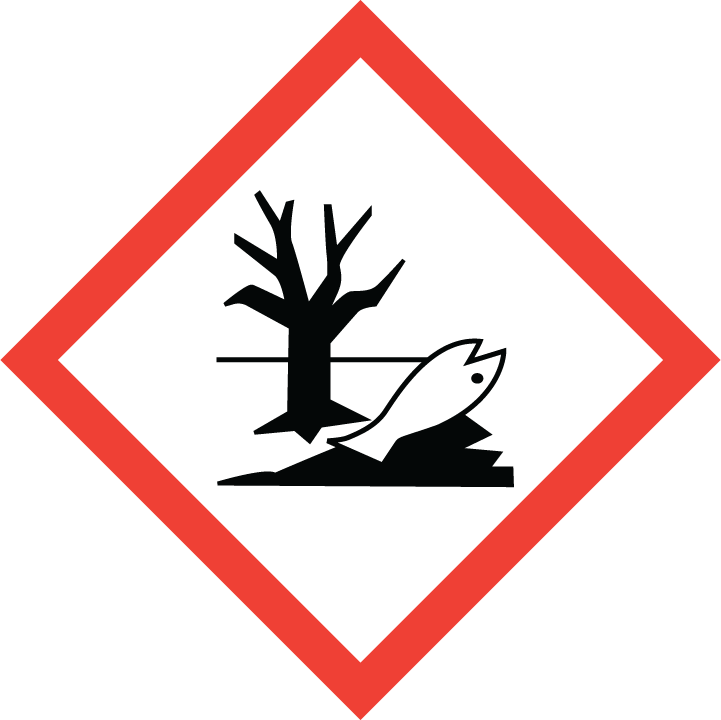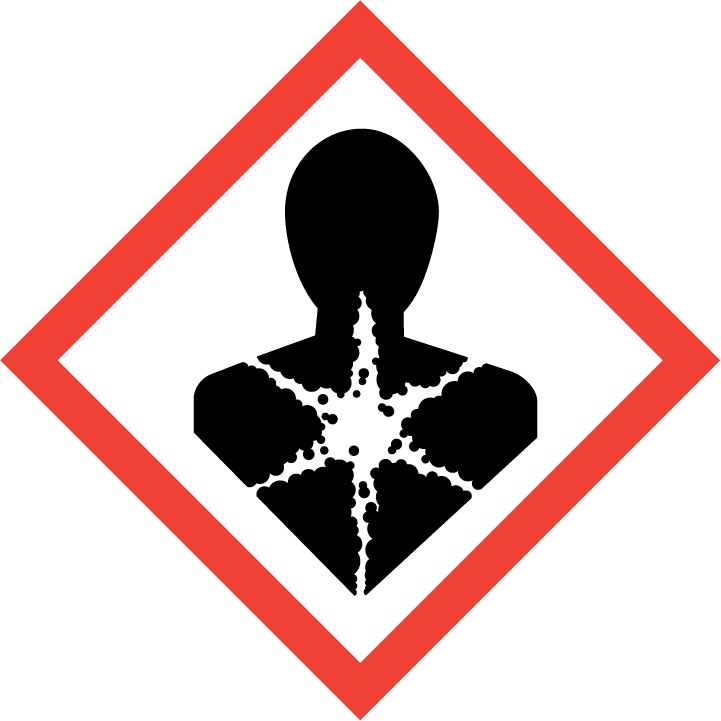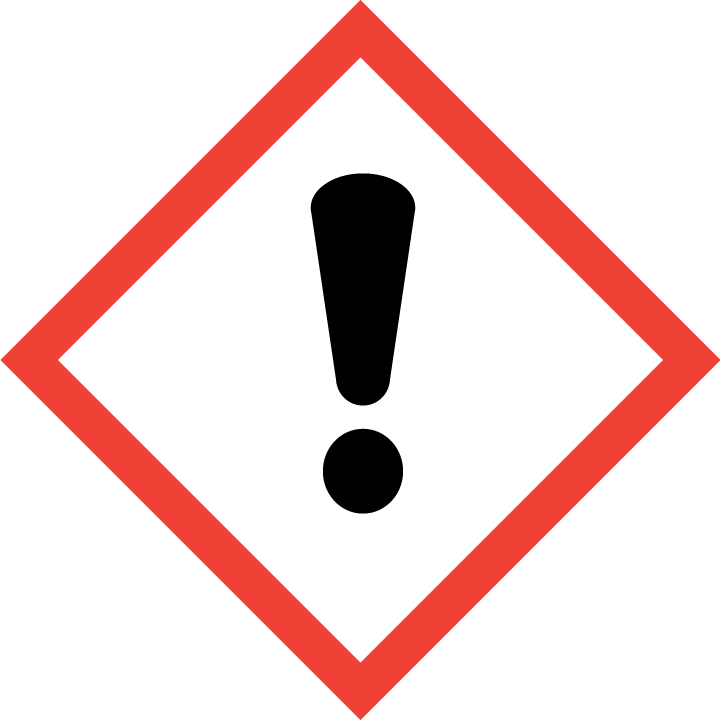1.Identification
1.1 GHS Product identifier
| Product name | amitraz |
|---|
1.2 Other means of identification
| Product number | - |
|---|---|
| Other names | RACET |
1.3 Recommended use of the chemical and restrictions on use
| Identified uses | For industry use only. |
|---|---|
| Uses advised against | no data available |
1.4 Supplier's details
1.5 Emergency phone number
| Emergency phone number | - |
|---|---|
| Service hours | Monday to Friday, 9am-5pm (Standard time zone: UTC/GMT +8 hours). |
2.Hazard identification
2.1 Classification of the substance or mixture
Acute toxicity - Oral, Category 4
Skin sensitization, Category 1
Specific target organ toxicity – repeated exposure, Category 2
Hazardous to the aquatic environment, short-term (Acute) - Category Acute 1
Hazardous to the aquatic environment, long-term (Chronic) - Category Chronic 1
2.2 GHS label elements, including precautionary statements
| Pictogram(s) |    |
|---|---|
| Signal word | Warning |
| Hazard statement(s) | H302 Harmful if swallowed H317 May cause an allergic skin reaction H373 May cause damage to organs through prolonged or repeated exposure H410 Very toxic to aquatic life with long lasting effects |
| Precautionary statement(s) | |
| Prevention | P264 Wash ... thoroughly after handling. P270 Do not eat, drink or smoke when using this product. P261 Avoid breathing dust/fume/gas/mist/vapours/spray. P272 Contaminated work clothing should not be allowed out of the workplace. P280 Wear protective gloves/protective clothing/eye protection/face protection. P260 Do not breathe dust/fume/gas/mist/vapours/spray. P273 Avoid release to the environment. |
| Response | P301+P312 IF SWALLOWED: Call a POISON CENTER/doctor/…if you feel unwell. P330 Rinse mouth. P302+P352 IF ON SKIN: Wash with plenty of water/... P333+P313 If skin irritation or rash occurs: Get medical advice/attention. P321 Specific treatment (see ... on this label). P362+P364 Take off contaminated clothing and wash it before reuse. P314 Get medical advice/attention if you feel unwell. P391 Collect spillage. |
| Storage | none |
| Disposal | P501 Dispose of contents/container to ... |
2.3 Other hazards which do not result in classification
none
3.Composition/information on ingredients
3.1 Substances
| Chemical name | Common names and synonyms | CAS number | EC number | Concentration |
|---|---|---|---|---|
| amitraz | amitraz | 33089-61-1 | none | 100% |
4.First-aid measures
4.1 Description of necessary first-aid measures
General advice
Consult a physician. Show this safety data sheet to the doctor in attendance.
If inhaled
Fresh air, rest. Seek medical attention if you feel unwell.
In case of skin contact
Remove contaminated clothes. Rinse and then wash skin with water and soap. Refer for medical attention .
In case of eye contact
Rinse with plenty of water (remove contact lenses if easily possible). Refer for medical attention.
If swallowed
Rinse mouth. Give a slurry of activated charcoal in water to drink. Refer for medical attention . See Notes.
4.2 Most important symptoms/effects, acute and delayed
no data available
4.3 Indication of immediate medical attention and special treatment needed, if necessary
Airway protection. Ensure that a clear airway exists. Intubate the patient and aspirate the secretions with a large-bore suction device if necessary. Administer oxygen by mechanically assisted pulmonary ventilation if respiration is depressed. Improve tissue oxygenation as much as possible before administering atropine, to minimize the risk of ventricular fibrillation. In severe poisonings, it may be necessary to support pulmonary ventilation mechanically for several days. /N-methyl carbamate insecticides/
5.Fire-fighting measures
5.1 Extinguishing media
Suitable extinguishing media
Fire Extinguishing Media: Water, foam, dry powder, CO2.
5.2 Specific hazards arising from the chemical
no data available
5.3 Special protective actions for fire-fighters
Wear self-contained breathing apparatus for firefighting if necessary.
6.Accidental release measures
6.1 Personal precautions, protective equipment and emergency procedures
Use personal protective equipment. Avoid dust formation. Avoid breathing vapours, mist or gas. Ensure adequate ventilation. Evacuate personnel to safe areas. Avoid breathing dust. For personal protection see section 8.
6.2 Environmental precautions
Personal protection: particulate filter respirator adapted to the airborne concentration of the substance. Do NOT let this chemical enter the environment. Sweep spilled substance into covered containers. If appropriate, moisten first to prevent dusting. Carefully collect remainder. Then store and dispose of according to local regulations.
6.3 Methods and materials for containment and cleaning up
If a spill occurs, clean it up promptly. Don't wash it away. Instead, sprinkle the spill with sawdust, vermiculite, or kitty litter. Sweep it into a plastic garbage bag, and dispose of it as directed on the pesticide product label./Residential users/
7.Handling and storage
7.1 Precautions for safe handling
Avoid contact with skin and eyes. Avoid formation of dust and aerosols. Avoid exposure - obtain special instructions before use.Provide appropriate exhaust ventilation at places where dust is formed. For precautions see section 2.2.
7.2 Conditions for safe storage, including any incompatibilities
Provision to contain effluent from fire extinguishing. Store in an area without drain or sewer access.Store in original container in locked storage area. /Prevent Tick Collar for Dogs/
8.Exposure controls/personal protection
8.1 Control parameters
Occupational Exposure limit values
no data available
Biological limit values
no data available
8.2 Appropriate engineering controls
Handle in accordance with good industrial hygiene and safety practice. Wash hands before breaks and at the end of workday.
8.3 Individual protection measures, such as personal protective equipment (PPE)
Eye/face protection
Safety glasses with side-shields conforming to EN166. Use equipment for eye protection tested and approved under appropriate government standards such as NIOSH (US) or EN 166(EU).
Skin protection
Wear impervious clothing. The type of protective equipment must be selected according to the concentration and amount of the dangerous substance at the specific workplace. Handle with gloves. Gloves must be inspected prior to use. Use proper glove removal technique(without touching glove's outer surface) to avoid skin contact with this product. Dispose of contaminated gloves after use in accordance with applicable laws and good laboratory practices. Wash and dry hands. The selected protective gloves have to satisfy the specifications of EU Directive 89/686/EEC and the standard EN 374 derived from it.
Respiratory protection
Wear dust mask when handling large quantities.
Thermal hazards
no data available
9.Physical and chemical properties
| Physical state | White monoclinic crystals. Commercial product is a pale, amber brown liquid with an aromatic smell of xylene. |
|---|---|
| Colour | White/pale yellow crystalline solid |
| Odour | Slight amine odor |
| Melting point/ freezing point | 86-87oC |
| Boiling point or initial boiling point and boiling range | 450.7oC at 760mmHg |
| Flammability | Combustible. Liquid formulations containing organic solvents may be flammable. Gives off irritating or toxic fumes (or gases) in a fire. |
| Lower and upper explosion limit / flammability limit | no data available |
| Flash point | no data available |
| Auto-ignition temperature | no data available |
| Decomposition temperature | no data available |
| pH | no data available |
| Kinematic viscosity | no data available |
| Solubility | Soluble in most organic solvents. |
| Partition coefficient n-octanol/water (log value) | log Kow = 5.50 |
| Vapour pressure | 2.0X10-6 mm Hg at 25°C |
| Density and/or relative density | 0.98g/cm3 |
| Relative vapour density | no data available |
| Particle characteristics | no data available |
10.Stability and reactivity
10.1 Reactivity
no data available
10.2 Chemical stability
Amitraz is unstable under acidic conditions.
10.3 Possibility of hazardous reactions
Unstable in acid.
10.4 Conditions to avoid
no data available
10.5 Incompatible materials
Amitraz is unstable under acidic conditions.
10.6 Hazardous decomposition products
When heated to decomposition it emits toxic fumes of /nitrogen oxides/.
11.Toxicological information
Acute toxicity
- Oral: LD50 Rat oral 600 mg/kg bw
- Inhalation: no data available
- Dermal: no data available
Skin corrosion/irritation
no data available
Serious eye damage/irritation
no data available
Respiratory or skin sensitization
no data available
Germ cell mutagenicity
no data available
Carcinogenicity
Cancer Classification: Group C Possible Human Carcinogen
Reproductive toxicity
no data available
STOT-single exposure
no data available
STOT-repeated exposure
no data available
Aspiration hazard
no data available
12.Ecological information
12.1 Toxicity
- Toxicity to fish: no data available
- Toxicity to daphnia and other aquatic invertebrates: EC50; Species: Daphnia magna (Water Flea) 1 instar larva; Conditions: freshwater, static; Concentration: 35 ug/L for 48 hr (28-44 ug/L); Effect: intoxication, immobilization. /Technical grade
- Toxicity to algae: no data available
- Toxicity to microorganisms: no data available
12.2 Persistence and degradability
AEROBIC: Amitraz degrades in aerobic soil with a half-life of less than one day. N-(2,4-dimethylphenyl)-N'-methylmethanimidamide (BTS27271)(2) and 2,4-dimethylphenylformamide (NTS27919)(2), formed via hydrolysuis at the C-N [N-methylmethanimidaminde] bond, are the primary metabolites of amitraz.(1).
12.3 Bioaccumulative potential
Measured BCF values of 588-1,838 in bluegill sunfish have been reported for amitraz(1). According to a classification scheme(2), these BCF values suggest bioconcentration in aquatic organisms is high to very high(SRC), provided the compound is not metabolized by the organism(SRC).
12.4 Mobility in soil
The Koc of amitraz was reported to range from 1,000(1) to 2000(2). According to a classification scheme(3), this Koc value indicates amitraz will have low mobility in soil. Although it is considered to be moderately mobile in some soils (batch equilibrium studies indicated moderate mobility in sandy loam, silt loam and clay soils and very mobile in clay soils), amitraz degrades rapidly and therefore is not considered to be a serious concern for groundwater contamination(4). Amitraz had measured Freundlich adsorption coefficients of 1.69 in a Shelby sandy soil, 3.01 in a Spencer sand, 89.13 in a Terling clay and 16.31 in a Shelford clay(4). The pKa of amitraz is 4.20(2), indicating that this compound will partially exist in the cation form in the environment and cations generally adsorb more strongly to soils containing organic carbon and clay than their neutral counterparts(5).
12.5 Other adverse effects
no data available
13.Disposal considerations
13.1 Disposal methods
Product
The material can be disposed of by removal to a licensed chemical destruction plant or by controlled incineration with flue gas scrubbing. Do not contaminate water, foodstuffs, feed or seed by storage or disposal. Do not discharge to sewer systems.
Contaminated packaging
Containers can be triply rinsed (or equivalent) and offered for recycling or reconditioning. Alternatively, the packaging can be punctured to make it unusable for other purposes and then be disposed of in a sanitary landfill. Controlled incineration with flue gas scrubbing is possible for combustible packaging materials.
14.Transport information
14.1 UN Number
| ADR/RID: UN3077 | IMDG: UN3077 | IATA: UN3077 |
14.2 UN Proper Shipping Name
| ADR/RID: ENVIRONMENTALLY HAZARDOUS SUBSTANCE, SOLID, N.O.S. |
| IMDG: ENVIRONMENTALLY HAZARDOUS SUBSTANCE, SOLID, N.O.S. |
| IATA: ENVIRONMENTALLY HAZARDOUS SUBSTANCE, SOLID, N.O.S. |
14.3 Transport hazard class(es)
| ADR/RID: unknown | IMDG: unknown | IATA: unknown |
14.4 Packing group, if applicable
| ADR/RID: unknown | IMDG: unknown | IATA: unknown |
14.5 Environmental hazards
| ADR/RID: yes | IMDG: yes | IATA: yes |
14.6 Special precautions for user
no data available
14.7 Transport in bulk according to Annex II of MARPOL 73/78 and the IBC Code
no data available
15.Regulatory information
15.1 Safety, health and environmental regulations specific for the product in question
| Chemical name | Common names and synonyms | CAS number | EC number |
|---|---|---|---|
| amitraz | amitraz | 33089-61-1 | none |
| European Inventory of Existing Commercial Chemical Substances (EINECS) | Listed. | ||
| EC Inventory | Listed. | ||
| United States Toxic Substances Control Act (TSCA) Inventory | Not Listed. | ||
| China Catalog of Hazardous chemicals 2015 | Not Listed. | ||
| New Zealand Inventory of Chemicals (NZIoC) | Listed. | ||
| Philippines Inventory of Chemicals and Chemical Substances (PICCS) | Not Listed. | ||
| Vietnam National Chemical Inventory | Listed. | ||
| Chinese Chemical Inventory of Existing Chemical Substances (China IECSC) | Listed. | ||
16.Other information
Information on revision
| Creation Date | Aug 19, 2017 |
|---|---|
| Revision Date | Aug 19, 2017 |
Abbreviations and acronyms
- CAS: Chemical Abstracts Service
- ADR: European Agreement concerning the International Carriage of Dangerous Goods by Road
- RID: Regulation concerning the International Carriage of Dangerous Goods by Rail
- IMDG: International Maritime Dangerous Goods
- IATA: International Air Transportation Association
- TWA: Time Weighted Average
- STEL: Short term exposure limit
- LC50: Lethal Concentration 50%
- LD50: Lethal Dose 50%
- EC50: Effective Concentration 50%
References
- IPCS - The International Chemical Safety Cards (ICSC), website: http://www.ilo.org/dyn/icsc/showcard.home
- HSDB - Hazardous Substances Data Bank, website: https://toxnet.nlm.nih.gov/newtoxnet/hsdb.htm
- IARC - International Agency for Research on Cancer, website: http://www.iarc.fr/
- eChemPortal - The Global Portal to Information on Chemical Substances by OECD, website: http://www.echemportal.org/echemportal/index?pageID=0&request_locale=en
- CAMEO Chemicals, website: http://cameochemicals.noaa.gov/search/simple
- ChemIDplus, website: http://chem.sis.nlm.nih.gov/chemidplus/chemidlite.jsp
- ERG - Emergency Response Guidebook by U.S. Department of Transportation, website: http://www.phmsa.dot.gov/hazmat/library/erg
- Germany GESTIS-database on hazard substance, website: http://www.dguv.de/ifa/gestis/gestis-stoffdatenbank/index-2.jsp
- ECHA - European Chemicals Agency, website: https://echa.europa.eu/




